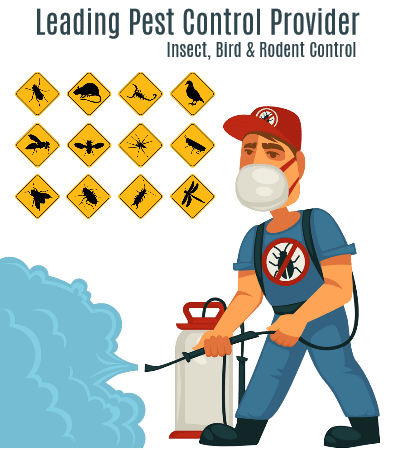Selling a car is more than just handing over the keys. Whether the vehicle still runs or is ready for recycling, the legal transfer of ownership is one of the most important steps in the process. For anyone in Richmond selling to a car removal company, understanding how ownership transfer works in Victoria can save a lot of confusion later.
If you are planning to use a cash for cars Richmond service, the process is fairly simple once you know what to expect. Here’s how to handle every step correctly, from paperwork to plate removal, so the sale is final and properly recorded with VicRoads.
Understanding the Ownership Transfer
In Victoria, the transfer of ownership means updating VicRoads records so the new buyer becomes the legal owner. Until that happens, the car is still listed under your name, even if it has already been picked up. This means if the vehicle is involved in a fine, toll, or accident before the transfer is lodged, you could still be held responsible.
The Notice of Disposal is the main document that protects sellers from these problems. It confirms the date of sale, the buyer’s details, and that the vehicle has officially changed hands. Once it’s submitted, VicRoads updates its system and removes your name from the registration.
Completing this step might sound like a formality, but it’s what finalises the sale in the eyes of the law — whether you are selling to a private buyer or using a scrap car removal Richmond service to recycle your old vehicle.
Step 1: Gather the Right Documents
Before you contact any car buyer or towing company, collect the paperwork linked to your vehicle. This ensures the sale can move forward smoothly and helps verify that you are the legal owner.
You will need:
-
Your Vehicle Registration Certificate – shows the registration number and confirms ownership.
-
Proof of identity – a driver’s licence or another accepted form of photo ID.
-
Vehicle Identification Number (VIN) and engine number – found on the car or in the registration papers.
-
Roadworthy Certificate (if relevant) – not always required for scrap or unregistered cars but useful if it’s still registered.
Keeping these documents ready helps both you and the buyer complete the paperwork correctly without back-and-forth delays.
Step 2: Confirm Who You Are Selling To
In Richmond, there are many car removal businesses, but not all operate under the same rules. Before agreeing to a sale, check that the company is licensed to buy and transport vehicles in Victoria.
Reputable businesses have an Australian Business Number (ABN) and often hold a Second-Hand Dealer Licence if they purchase cars for resale or dismantling. You can confirm these details on the Consumer Affairs Victoria website.
This step helps ensure your car is sold legally and that the buyer will handle it responsibly — whether it’s going to be resold, dismantled, or recycled.
Step 3: Complete the Notice of Disposal
Once you’ve agreed on a sale, it’s time to submit the Notice of Disposal to VicRoads. This can be done online and only takes a few minutes.
You’ll need to enter:
-
The buyer’s full name or business name
-
The buyer’s licence number or ABN
-
The car’s registration number, VIN, and odometer reading
-
The date of sale
Submitting this notice removes your name from the vehicle record and protects you from any future fines or liabilities. Make sure to do it as soon as the car leaves your property — ideally on the same day.
Step 4: Remove Number Plates and Personal Items
Many sellers forget this simple but important step. Before the towing truck arrives, remove the number plates and check the car for any personal belongings.
-
If the vehicle is still registered, return the plates to VicRoads and cancel the registration. This prevents renewal notices or registration fees being sent to you later.
-
If the car is unregistered, you may already have returned the plates, but it’s worth double-checking.
It’s also smart to clean out the glove box, under the seats, and boot. Once the car is gone, retrieving anything left behind becomes almost impossible.
Step 5: Record the Payment Properly
Although the phrase “cash for cars” suggests payment in cash, most businesses now pay by bank transfer or cheque due to government regulations. Cash transactions over $10,000 are restricted under Australian law.
Always get a written record of the payment that includes:
-
The amount agreed
-
The payment method
-
The date of the sale
-
The buyer’s details
This written proof is your safeguard if there are any disputes later about the sale or payment.
Step 6: Finalise the Sale and Hand Over the Keys
After receiving payment and submitting your Notice of Disposal, you can officially hand over the keys. The car is now legally owned by the buyer, who will likely tow it away on the same day.
It’s a good idea to take a quick photo of the vehicle before it’s taken. This provides visual confirmation of the car’s condition and pickup date, which can be helpful for your records.
Step 7: Contact Your Insurance Provider
Once the car is sold, remember to cancel your insurance policy. Some insurers will refund the unused portion of your premium, while others may allow you to transfer the coverage to a new car.
Cancelling the policy ensures you’re no longer responsible if anything happens to the car after it leaves your possession.
Why This Process Matters
Transferring ownership isn’t just about paperwork — it protects both you and the buyer. For sellers, it ensures that no future fees, fines, or liabilities come your way. For buyers, it confirms that they legally own the car and can use or recycle it as intended.
In Victoria, car removal and recycling companies play a big role in environmental management. According to data from Sustainability Victoria, around 80% of a car’s materials can be recycled — including metals, plastics, and glass. By selling to an authorised operator, you’re helping reduce waste and ensure materials are reused instead of ending up in landfill.
To learn more about how ownership transfer works when selling your old car , visit https://www.bestcashforcarz.com.au/
Common Mistakes Sellers Should Avoid
-
Not informing VicRoads promptly: Waiting too long to file the Notice of Disposal can result in fines or notices being sent to you.
-
Missing paperwork: Selling without proof of ownership can slow the process or lead to disputes.
-
Leaving plates on the car: Forgetting to remove plates may cause registration renewal or fines to remain in your name.
-
Not checking the buyer’s licence: Always confirm that the company is legally allowed to buy and tow vehicles in Victoria.
-
Forgetting to keep a copy of documents: Store a copy of your transaction receipt and VicRoads confirmation for future reference.
By avoiding these mistakes, the ownership transfer stays smooth, lawful, and properly documented.
The Bigger Picture
When you sell your car for removal or recycling, you are not just clearing space — you are taking part in a process that supports responsible vehicle disposal in Victoria. Old or damaged vehicles can release harmful materials if not handled properly. Licensed recyclers follow the Environment Protection Act 2017 (Vic), which outlines how automotive parts, fluids, and metals should be treated.
This process ensures that usable materials are recovered safely and that the rest is disposed of with minimal environmental harm.
Final Thoughts
Selling a car through a removal or recycling service might seem like a straightforward task, but the transfer of ownership is what officially closes the deal. By preparing your documents, checking the buyer’s credentials, removing your plates, and notifying VicRoads, you protect yourself from future problems.
It’s a short process that gives you peace of mind knowing your old car has been handled responsibly and that the sale is legally complete.
Whether your car is running or not, following these steps ensures the transfer is smooth, lawful, and final — just as it should be when using a service for car collection and recycling in Richmond.


